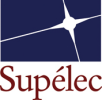Coherent wavefront synthesis in a wave-diffusive medium
Résumé
In a number of applications, the generation of test wavefronts is a fundamental step in the experimental characterization of a device under test (DUT). Examples range from radar applications to material testing, where the common point is the need to submit the DUT to an a priori known wavefront: the observation of the response of the DUT to the wavefront provides basic information about the state of the DUT. The generation of wavefronts is typically sought in simple environments, e.g., anechoic ones, where the propagation of the wavefront can be easily predicted by means of free-space propagation models. This approach allows an intuitive understanding of propagation phenomena, with a dominant line-of-sight contribution. A less intuitive approach exploits the weak spatial correlation ensured by certain random media. In this paper we show how an extended time-reversal approach allows the generation of wavefronts in media capable of sustaining a diffuse-field propagation. The procedure introduced is based on the idea of having a synthetic source radiating a reference wavefront: this first radiating phase is entirely based on a post-processing procedure. The signals "virtually" collected over the time-reversal mirror (TRM) antennas are then reversed in time and can be applied to real-world antennas. We show that the wavefront thus generated shares close features with the synthetic one. Since the signals driving the antennas are synthesized without need to radiate the wavefront in the first place, this procedure allows generating arbitrary wavefronts that could be difficult to generate in a free-space environment. For instance, a wavefront with frequency-independent directivity can be directly generated, even though the single TRM antennas were not capable of such a feature. This result is entirely based on the weak spatial correlation ensured by wavediffusive media. In practice, the synthetic wavefront is strongly correlated with the reference one only when the same time and positions are considered. As a result, the wave-diffusive medium is capable of emulating the presence of a coherent wavefront propagating as though in a free-space environment. The intrinsical isotropy and depolarization characterizing wave-diffusive media imply that wavefronts with any direction of arrival and polarizations can be generated, with no need for a line-of-sight path. The proposed method is therefore an interesting alternative to anechoic environments where similar features would require either encircling the DUT with multiple sources or moving the source/DUT through inherently slow mechanics.

